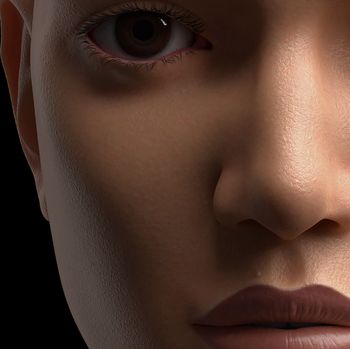Miquela Sousa or Lil Miquela—a 19-year-old Brazilian-American model, “musical artist”, and influencer—was the world's first ever virtual supermodel. Created in 2016, she lived in Los Angeles, wore clothes by luxury brands like Chanel and hobnobbed with musicians and artists in upscale restaurants. Shudu Gram, the first virtual Black CGI supermodel, was once a muse for Rihanna’s cosmetic brand, Fenty Beauty. To be sure, creating a digital supermodel, which involves employing sophisticated modelling software to create hyper-realistic 3D images, is fraught with ethical risks. But we now live in surreal times, when technology is both aiding and threatening the human race.
So when Nila, “India's first digital model”, was launched last week by Inega, a 20-year-old modelling agency, there was some interest on social media to create spin-offs and counter-claims. Another digital model named Leena Khurana popped up on Instagram claiming to be “India's first CGI fashion girl—Delhi brat, Bombay bred”. There is an attempt to humanise and build a story around Nila. “Nila's guiding principle, as she learns more about the world, is to treat those around her with fairness. And, consequently, to be treated fairly. Her favourite emotion is love.... She detests fakery in all its forms and believes that kindness can save the world,” says Ankit Mehta, CEO of Inega and part of the production team that helped conceptualise Nila, unwittingly making her sound like a beauty contestant who idolises Mother Teresa.
On June 22, Nila introduced herself on Instagram thus: “Hi. I'm Nila. Happy to be here”, followed by a close-up of her chiselled face and full lips. Her features were sculpted using a tool called ZBrush and rendered out of a technology called Arnold. Mehta says Nila might not make her debut on a runway, although she does come just in time for India's first ever digital fashion week in August. “It could be an ad campaign or a magazine cover. Who knows?” he says, building on the mystique. “The idea is exciting and we have a long way to go. There is enough interest from the fraternity for collaborations and promotions.” He points out how globally, brands such as Valentino, Dior and Prada have already welcomed virtual models in their campaigns, to complement real models, and how there is a huge untapped opportunity for the fashion industry here.
The fraternity has so far registered mixed reactions. Rahul Mishra, the first Indian to win the International Woolmark Prize in 2014 at the Milan Fashion Week, is interested but cautious. “I feel that this makes me curious, at the least, to find out what prospects lie ahead of us with this new advancement,” says Mishra, before adding a caveat. “We often take three to four days to cast models for our shows in Paris, going through about 400 girls to shortlist the right girl. They are not just hangers, they are breathing beings who are responsible for bringing life to a look.
Designer Ashdeen Z. Lilaowala, of the label Ashdeen which specialises in Parsi Gara saris, is not much enthused. “Being a purist, virtual models do not quite excite me,” he says. “Fads like this come and go. Everything that a physical model does today is a statement, starting from who she is, where she comes from, her background, race and body type. To generate a digital person who is controlled in some way makes no sense to me.” But “fashion”, by definition, also means to manufacture, cast, construct and fabricate. Is it not built on creating an illusion of both perfection and casual abandon?


